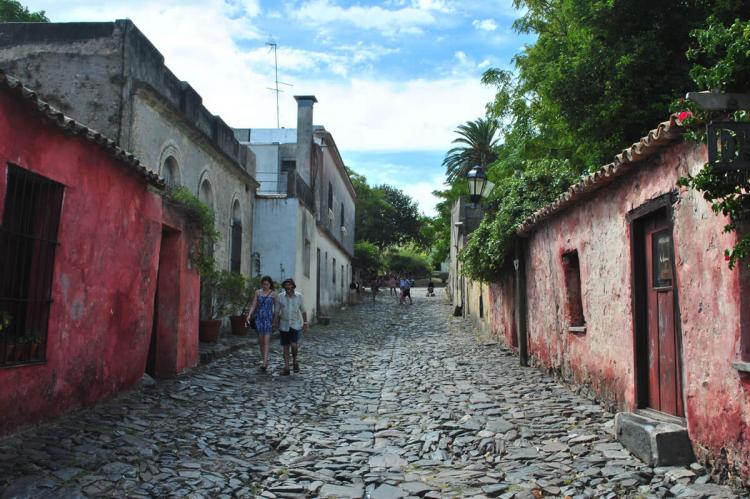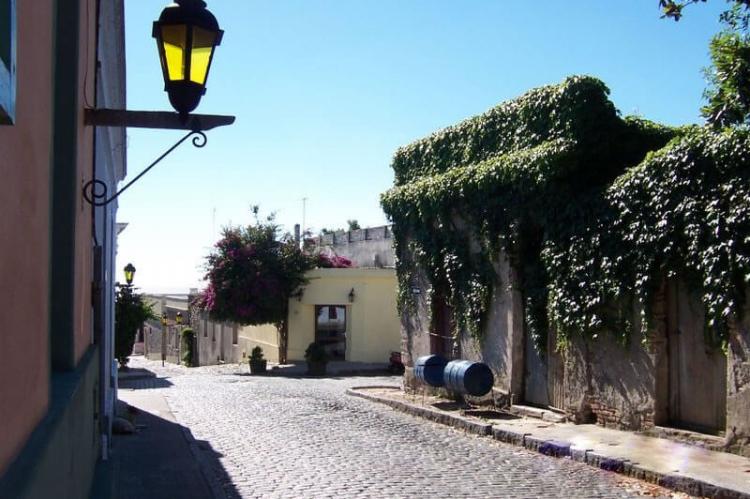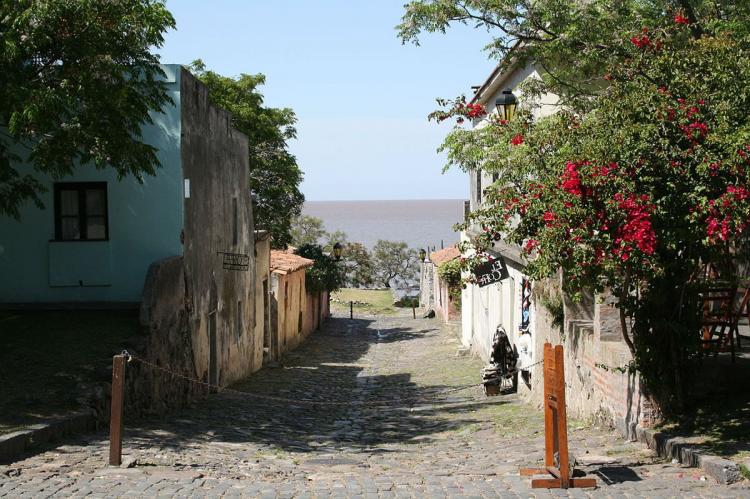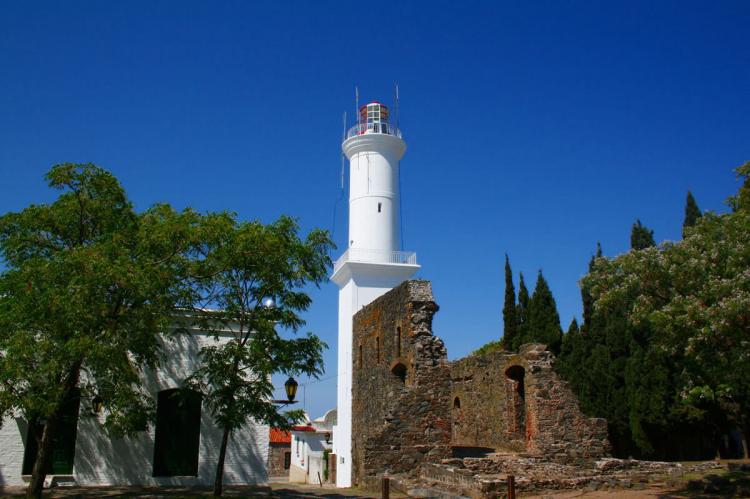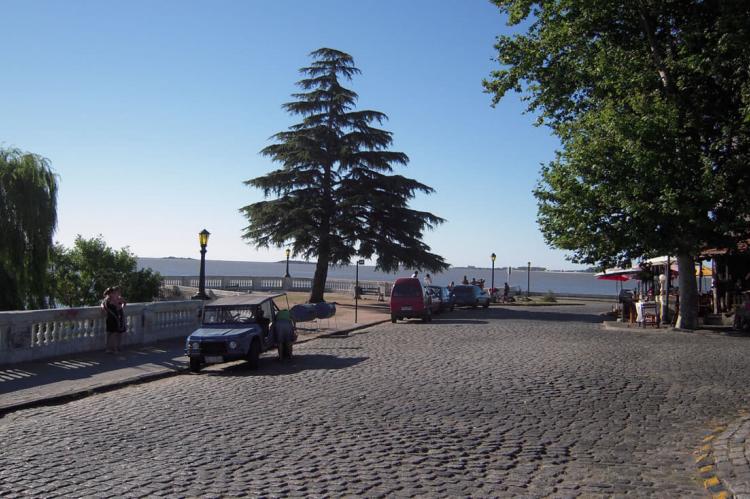Exploring Colonia del Sacramento: A Journey Through History and Architecture
Colonia del Sacramento, a city on the northern shores of the Río de la Plata, is a testament to Uruguay's rich cultural heritage. Established in 1680 by the Portuguese, it served as a strategic stronghold for European powers in South America. Today, it offers visitors a glimpse into Uruguay's past.
Exploring Colonia del Sacramento: A Journey Through History and Architecture
Colonia del Sacramento, a charming city nestled along the Río de la Plata's northern shores, is a testament to Uruguay's rich historical tapestry. Established in 1680 by the Portuguese, its founding marked a pivotal moment in the colonial era, as it emerged as a vital strategic stronghold amid the territorial struggles between European powers in South America.
Situated in close proximity to Buenos Aires, Colonia del Sacramento served as a crucial outpost, guarding the entrance to the expansive Río de la Plata estuary and exerting influence over regional trade routes. Throughout its tumultuous history, the city witnessed the ebb and flow of colonial powers, enduring sieges, battles, and shifting allegiances.
Today, Colonia del Sacramento is a legacy of its storied past. It offers visitors a glimpse into the intricate tapestry of cultures and influences shaping Uruguay's identity over the centuries.
The World Heritage Site
The designation of the "Historic Quarter of the City of Colonia del Sacramento" as a UNESCO World Heritage Site underscores its profound cultural and historical importance. This designation recognizes the exceptional preservation of its urban landscape and the architectural treasures it harbors, offering visitors a captivating journey through time.
At the heart of the historic quarter lies a mesmerizing blend of architectural styles that witness the city's multifaceted past. The cobblestone streets wind through a labyrinth of colonial-era buildings, each bearing the hallmark of Portuguese, Spanish, and post-colonial influences. These structures, dating back to the 17th, 18th, and 19th centuries, stand as silent sentinels, preserving the stories of bygone eras within their weathered walls.
Walking through the historic quarter, visitors are transported to a bygone era, where the echoes of colonial conquests and cultural exchange reverberate through the cobblestone streets. The distinctive Portuguese-inspired architecture, characterized by whitewashed walls and tiled roofs, coexists harmoniously with the ornate facades and wrought-iron balconies typical of Spanish colonial design.
Amidst this architectural tapestry, iconic landmarks beckon travelers to delve deeper into Colonia's rich history. The Portón de Campo, or City Gate, is a testament to the city's strategic significance, while the ruins of the 17th-century Convent of San Francisco evoke a sense of mystery and intrigue. The Basilica del Santísimo Sacramento, a stone masterpiece erected by the Portuguese in 1808, showcases exquisite craftsmanship and religious devotion.
As visitors explore further, they encounter cultural treasures such as the Portuguese Museum, offering a glimpse into the lives of early settlers through artifacts and historical exhibits. The Casa de Nacarello, an 18th-century Portuguese house, provides insight into the daily life of colonial inhabitants. At the same time, the Municipal Museum delves into the city's diverse heritage through its extensive collection of artifacts and documents.
In the Plaza Mayor, the heart of Colonia's historic quarter, the Viceroy's House stands as a symbol of colonial power and authority, its reconstructed facade offering a glimpse into the city's illustrious past. Nearby, the Plaza de Toros Real de San Carlos, an abandoned bull ring, serves as a reminder of the city's vibrant cultural traditions.
Architectural Fusion
Colonia del Sacramento's architectural landscape is a vivid tapestry of its diverse cultural influences, reflecting centuries of historical upheaval and cultural exchange. The juxtaposition of the irregular street network in the Portuguese part with the Spanish colonial-style layout outside the fortification wall is a tangible reminder of the city's complex past. As artisans from various backgrounds converged on Colonia, each brought unique architectural traditions, resulting in a captivating fusion of styles that distinguishes the city's built environment.
Over time, this fusion gave rise to a distinctive architectural vernacular characterized by the seamless integration of Portuguese, Spanish, and post-colonial elements. From the ornate facades adorned with intricate carvings to the red-tiled roofs that dot the skyline, Colonia del Sacramento's architecture bears witness to the city's rich cultural heritage and enduring legacy of cultural exchange.
Notable Buildings
Within the tree-lined Plaza Mayor, Colonia del Sacramento boasts an array of notable buildings that showcase its architectural splendor and historical significance. With its wooden drawbridge, the iconic City Gate stands as a tangible symbol of the city's defensive fortifications, evoking a sense of intrigue and nostalgia for bygone eras. Nearby, the ruins of the 17th-century Convent of San Francisco offer a glimpse into the city's religious past. At the same time, the imposing Basilica of the Holy Sacrament, constructed of stone by the Portuguese in 1808, serves as a testament to the city's enduring faith and devotion.
The Portuguese Museum and Casa de Nacarello further enrich Colonia's cultural landscape. They provide immersive insights into the city's rich history and cultural heritage. Through their extensive collections of artifacts, furnishings, and historical exhibits, these institutions offer visitors a deeper understanding of Colonia's multifaceted past and the diverse influences that have shaped its identity over the centuries.
Urban Landscape
Colonia del Sacramento's urban landscape is a study in contrast, with its large avenues and spacious squares juxtaposed against narrow cobblestone streets and intimate courtyards. Unlike the rigid grid patterns characteristic of Spanish colonial cities, Colonia's free plan adapts organically to the site's natural topography, reflecting its military origins and strategic significance.
This unique urban layout invites exploration, beckoning visitors to wander through its labyrinthine streets and discover hidden gems around every corner. From bustling market squares to secluded plazas, Colonia's urban fabric offers a captivating blend of public spaces and private retreats, each infused with its own distinct charm and character.
Scale and Relationship to the River
The intimate scale of Colonia del Sacramento is defined by the predominance of single-story houses and the scarcity of taller structures, creating a sense of coziness and intimacy that permeates the cityscape. Against this backdrop, the towering outlines of the lighthouse and church towers emerge as iconic landmarks, serving as visual anchors that punctuate the skyline and guide travelers through the city's maze-like streets.
Surrounded by water on three sides, Colonia enjoys a close relationship with the river, which has shaped its identity and defined its character over the centuries. From its bustling port to its tranquil waterfront promenades, the river serves as a lifeline for the city, connecting it to the wider world and enriching its natural beauty and charm.
In conclusion, Colonia del Sacramento is a testament to the rich tapestry of history, culture, and architectural heritage that defines Uruguay's oldest town. Colonia's story is one of resilience, adaptation, and cultural exchange, from its strategic significance as a colonial outpost to its designation as a UNESCO World Heritage Site. Through its eclectic architecture, vibrant urban landscape, and intimate relationship with the river, Colonia del Sacramento offers visitors a glimpse into Uruguay's storied past and a reminder of the enduring legacy of its diverse cultural influences. As the city continues to evolve and grow, it remains a beacon of cultural heritage and inspiration for future generations to cherish and preserve.
